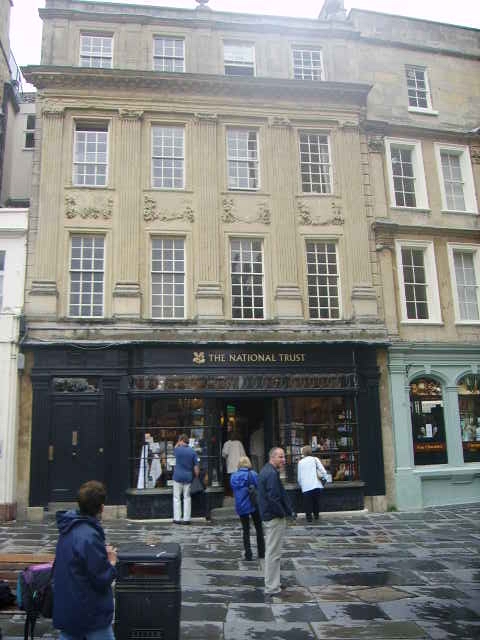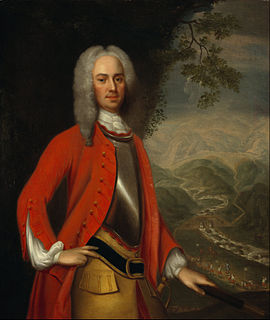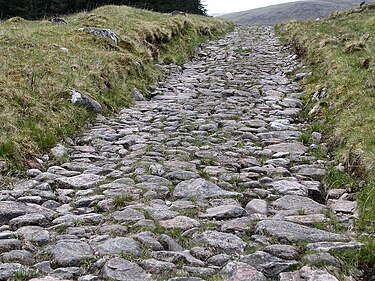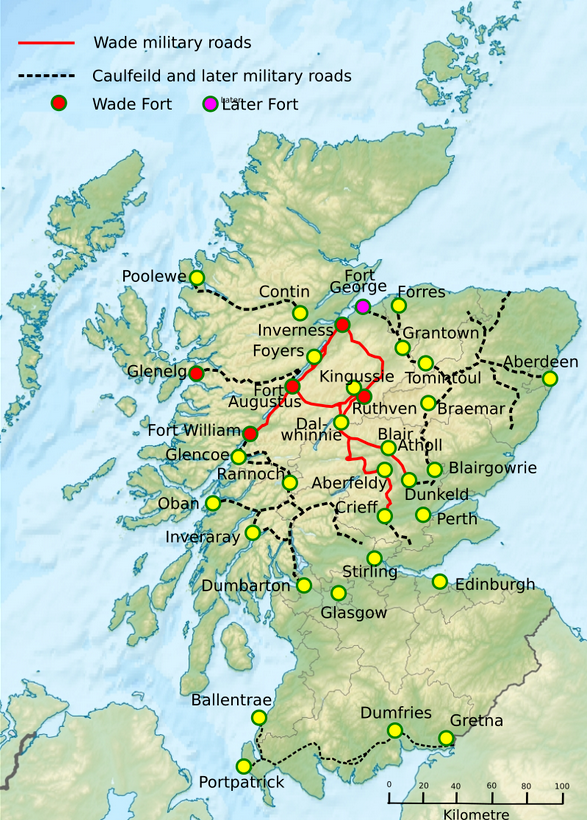
As a Course Director for Road Scholar there are names of people you come across in your travels, who became part of your tour, who you have no real idea who they are. General Wade is a typical example. I first heard of him in Bath, as the owner of the rather wonderful early 18th Century town house in Bath, pictured above. The house sits opposite to the Georgian entry to the famous Roman Baths. Most Georgian houses in Bath are Palladian, Classical Revival architecture as influenced by Andrea Palladio, and implemented by John Wood, and others in Bath. General Wade’s is wonderfully not Palladian. It displays its classical influence by the pilasters between the windows and the swags above, but it doesn’t have the solidity of the Palladian style. It makes it unusual and special because it illustrates a style that has largely disappeared in Bath, and indeed around the country, It was built around 1700 and is a Grade 1 listed.

General Wade it turns out, was the MP for Bath (after 1722, retaining the seat for 25 years) and in charge of the defences of the area during the Jacobite Revolt of 1715. According to the guidebook’s story, Ralph Allen, one of the people who made Bath into a world-famous City, opened letters between rebels and found out where the guns were stored, and provided the information to Wade, who was able to prevent an uprising in the West Country.
Allen was the Post Master who made a small fortune implementing so-called ‘cross posts’, The original postal system sent posts from the regions, to London to be sent out to the destination region. Allen realised he could make a lot of money linking regional centres directly and not going via London. Following his interception of crucial military information, he married General Wade’s Daughter. Rising in society and in wealth, he purchased the limestone quarries above Bath, used a gravity railway, and invested in a canal scheme to reduce transport costs for his highly priced limestone. It could now be transported and used in the bigger town of Bristol. He worked with John Wood, who used his stone in the Palladian style which made Bath stone fashionable. What an entrepreneur! Reducing costs while increasing demand at the same time. Ralph Allen, architect John Wood, and impresario, Beau Nash (who made Bath into a fashionable entertainment centre) are the three people credited with the development of Bath as one of Europe’s most fashionable centres.
In 1690 Wade was commissioned into the Earl of Bath’s regiment, and this led to a stella military career, including fighting in the War of Spanish Succession under Marlborough. He was made a Brigadier General in 1708. After his success in keeping the West Country secure he was made Commander in Chief of His Majesty’s Forces, Castles, Forts, and Barracks in North Britain. The term ‘North Britain’ was used following the union of England and Scotland.
I next came across the name of General Wade, when taking a group along Hadrian’s wall, as the military way, running south of the wall was said to have been built by General Wade. He built 240 miles of military roads and 30 bridges. My next encounter with him was as the constructor of the road that runs North alongside Loch Lomond. He essentially put in the military framework that was used to subdue the Highlanders in the Jacobite Wars.
He became a Field Marshall in 1743 in the War of the Austrian Succession, In the ’45, he based his strategy on concentrating his forces on Newcastle, but Bonnie Prince Charlie, outfoxed him by taking the West Coast route out of Scotland via Carlisle into Lancashire. The Scots got as far south as Derby, but then retreated as the hoped for support from English Jacobites nor the French invasion materialised. Wade resigned from his command in 1745 and was replaced by Prince William, Duke of Cumberland, otherwise known as the Butcher of Cullodon. The 1745 Jacobite Rebellion is known in Scottish Gaelic: as the Bliadhna Theàrlaich, [ˈpliən̪ˠə ˈhjaːrˠl̪ˠɪç], or ‘The Year of Charles’).
In 1746 Wade helped plan the East West road by Hadrian’s Wall to prevent in future any repetition of the British failing to prevent a breakout of a Scottish army from North Britain. He died before construction was begun, and therefore didn’t see the destruction of parts of Hadrian’s Wall by the building of the road. It is still in use today, and was used by many people to see the famous Sycamore Tree in Sycamore Gap.
https://en.wikipedia.org/wiki/George_Wade


